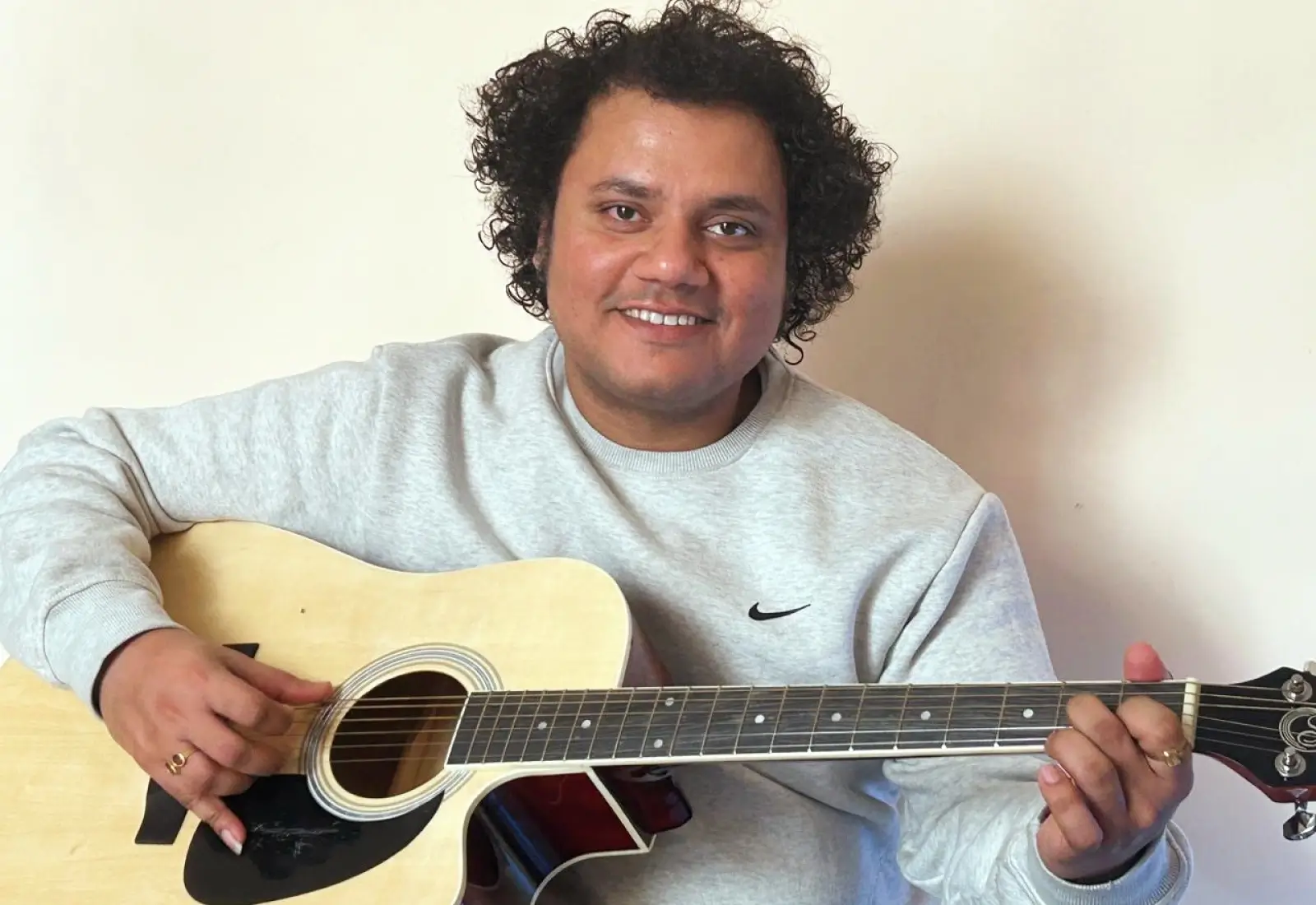Featured
A Beginner's Guide to Understanding the Bass Guitar
How to Play Bass Guitar?
It's not always the centrepiece, but the bass is probably the most important instrument on a tire stand.
If you're interested in learning to play bass, it won't be long before you can maintain a constant beat and unleash the world of music collaboration. In this bass guitar beginners guide, you will get to learn how to play bass guitar.
Is Bass Guitar Easy to Learn?
It's easy to learn the basics of bass, but make no mistake in your assumptions as a beginner.
Mastering this instrument requires as much work as any other instrument.
Therefore, it is important for qualified teachers to guide the journey through the bottom of the sound spectrum.
There is no substitute for bass lessons, but there are some basic aspects of the instrument.
These basics include topics such as bass structure, tuning methods, practice methods, and how to read bass tabs.
In this article, we'll cover all these queries and learn how to play the beginner level of bass as effectively as possible.
Why Should You Choose the Bass Guitar?
Lead guitarists and singers tend to absorb all the spotlight, but the secret weapon of major orchestras is a good bass guitarist.
Bass power cannot be overestimated. For a more practical example, just connect your bass guitar to your amp and turn up the volume.
When you will strum the thickest string, you can hear our meaning.
Not only can you hear the bass, but you can also feel it.
Remove the bass even if the audience is unaware of the role the bass plays in the band.
They will definitely feel the difference. Along with the drummer, the bass guitar provides the rhythms and rhythms of all popular musical styles.
This means that there is always a great demand for good bass players. If you learn to play the bass well, you'll have no problem finding a performance.
How to Choose a Bass
If you're just starting to learn bass, you don't have to pay thousands of dollars for a classic instrument.
We recommend starting with an entry-level base for beginners and studying towards higher models as your skills improve.
When you start your search, start with your budget and understand the basics of bass.
If you understand the bass and its structure, you can ask the right questions and make informed decisions.
Components of a Bass Guitar
Neck: The base neck contains the headpiece, fingerboard, and internal rod. This is how the neck connects to the body of the instrument.
Headstock: The headstock is the widest part of the end of the neck where the tuning pins are located. Tuning pins are a way to adjust the tension of the strings and change the pitch to tune the instrument.
Frets: A thin piece of metal called a fret is embedded in the fingerboard. The frets divide the neck into semitone steps and determine where each note is played on the neck. Some bass is indifferent, but players need more skill and it's best to leave it to intermediate or advanced players. If you are learning to play bass for beginners, you will definitely want fretless bass.
Armor Bar: The armor bar is used to connect the neck to the body and prevent the neck from twisting. The bass strings are much thicker than the guitar strings, which puts a lot of pressure on the neck. Barbells allow you to straighten your neck when bent or twisted. It is also used to adjust the height of the rope.
Types of Basses
There are many variations of the bass, including solid body basses and hollow body basses.
The pickup can be a single coil or humbucker, and the electronics can be passive or active. The bass has four, five, and even six strings.
All these variations (apart from the number of strings) affect the bass tone and are not important to its execution.
It's slightly smaller than a full-size instrument, so there's a small "scale-length" bass cabinet that's perfect for beginner musicians.
The best option for choosing the right bass is to set a budget and then go to your local musical instrument store.
Take a look at the options available in your price range and see what works best for you.
The most important factor is to make sure that the instrument feels comfortable when you hold it in your hand.
As a beginner, play and practice as much time as you can. As you progress, you may decide to upgrade to a better tool.
At that point, it's good to have a deeper understanding of pickups and electronics.
Because it can shape the personal sound of the instrument. Bass teachers can also help you choose a new instrument.
Most bass guitars have the right electronics and four strings. Play a variety of instruments and choose the one you like best!
Bass Checklist for Beginners
Having the right tools is the key to learning them. There are some necessities starting with the bassist:
• Baseband – A guitar band not only helps keep you safe in the right place to play an instrument, but it also helps to show your sense of personality and style.
• Cable: Whether you connect the bass to an amplifier or a string punch box, you can use a cable to make the connection.
• Amp - No other sensation of connecting an electric bass and hearing the roar come back to life. Whether you increase it by a factor of 10 or turn it down, the amp helps you hear the true tone of the instrument and improve your technique. Not sure which amp is best for you? Get help and find out how to choose the ideal bass model amp.
• Digital Receiver - Keeping the bass tone helps your audience grow. As your skill level increases, it's a good idea to try different bass voices. Digital receivers help you find the right tone.
Bass Playing Technique for Beginners
It has been a great debate for years: whether you play with a pick or with your fingers. The truth is that there is no wrong way to play bass.
Depending on your favorite gender and style, and the strength and agility of your fingers. Both styles have their own advantages.
• Play Bass with a Pick - If you're looking for speed and versatility, you can pick with a pick. Not only can you play the notes faster than your fingers (in addition to years of practice and technique completion), you can also try different thickness choices to adjust the pitch and produce different notes.
• Bass fingering: Bass sometimes referred to as fingerstyle, produces a softer sound so that you can tap the strings for a funky tone. Over time, you can hone your skills and experiment with your thumb to get an organic tone.
How to Practice Bass as Beginners
Exercise is the key to learning to play the bass for beginners. How much do you need to exercise?
Exercise as often as you can on your schedule. However, it's a good idea to set up a basic way to proceed.
Get started with the following suggestions that we have curated for you:
• Regular exercise is important. If possible, exercise daily for as long as 30 minutes.
• Find time to exercise and focus without distraction. Some players get up early and practice one hour before work, while others practice after dinner.
• Start with a technical exercise in the beginning. Move your fingers and focus your mind by playing scales and chords.
• As a bassist, it is important to develop a strong sense of time. Always practice with a rhythm device, such as a metronome, drum machine, or background recording.
• Start slowly. Focus on each note to develop fluency and accuracy.
• Keep track of your progress in the exercise log. Track routines, goals, exercises, and difficult sections that you need to work on.
Learning to play an instrument is a lifelong challenge. It is possible to learn bass on your own, but it is advisable to study with a qualified teacher.
It helps you avoid bad habits and provide guidance, inspiration, and encouragement to overcome the challenge you may face.
Check out ipassio Bass Lessons
Learning to play an instrument is a great way to challenge yourself and take your love of music to the next level. As a beginner, you have made a great decision when you decided to learn to play the bass! Take a free meeting session for Bass lessons with ipassio and unlock scales, bass skills, and learn songs to play on bass. Good luck on your musical journey!














